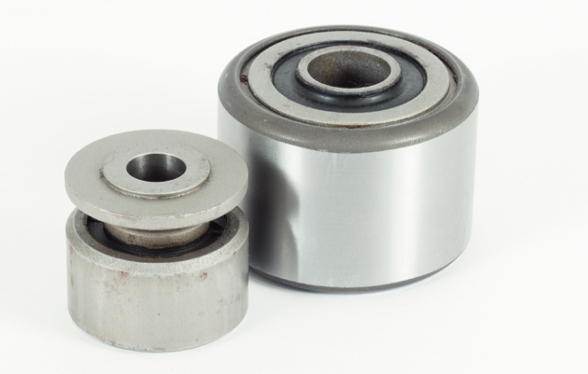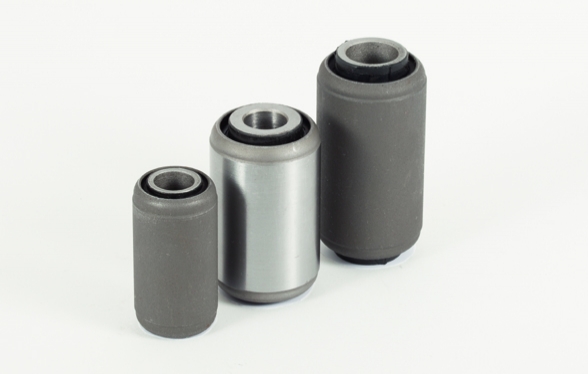Bushes (Flexible Bearings)
What is a bush in engineering?
Machines consist of moving parts. The movement of those parts causes friction between components and this can result in damage to mechanisms. Bushes allow the necessary movement for the machine to operate, but reduce friction and vibration to increase the lifespan of parts, increase efficiency and improve operational speeds.
A bush is a fixing - used in mechanical engineering - between two moving parts. Often it is a strengthened fixing point by which one piece of an assembly is joined to another. They are designed to be either fixed or removable and essentially serve to reduce friction, shock and vibration between two parts.
Bushes help to reduce ongoing wear and tear of mechanical components as they limit the friction between them. Bushings are most suitable for movements which include rotation, oscillation or inline.
Where are engineering bushes used?
A bushing is a type of bearing that slides over a shaft or rod in a mechanism, resulting in low friction movement. Engineers choose which bushes to use based upon the forces and loads to be applied to them. Depending upon the application, some bushings will be more appropriate and perform better than others.
A common usage for bushes is in vehicle suspension bushing systems, connecting various moving arms to pivoting points in the chassis. More often than not, vehicle suspension mechanisms will be made of rubber or a synthetic rubber and sit between two metal parts, allowing some movement but reducing those forces which would damage the mechanism over time.
What can bushes be used for?
Bushes can be used to accommodate loads, reduce shock and correct misalignment. They are also very effective when used as anti-vibration mounts. Vibration can cause damage to machine parts, loosen joined components and present health and safety challenges. Therefore, using bushes as an anti-vibration tool can be critical in the maintenance and continuity of your operations.
What is the difference between bushings and bearings?
The short answer is that there is not really a difference - a bushing is a type of bearing. Generally, bearings help to facilitate the movement between parts in a mechanism whilst reducing the forces of friction on them. A bushing is a specific bearing design and is used in certain applications and industries.
Both are used for the reduction of damage and general wear and tear to moving parts of a mechanism. In some scenarios, bushes will be more appropriate and vice versa. You should speak to a specialist engineer to ensure you have the correct product for your needs.
At Aegis Rubber Engineering, we have over 30 years’ experience in the design, manufacture and specification of bushings and our wide range of customers rely on our expertise to ensure their machinery can perform to its optimal level.
Do I need a bushing or a bearing?
The answer to this frequently asked question depends upon the requirement of the machinery you are using and the industry. There are also a number of factors involved including the machine’s operational speed, load capacity, noise, vibration and stress.
There are instances where bushings will be more appropriate than bearings for instance if you require high load-bearing tolerances. The need for ongoing lubrication would also mean that bushings would be more effective than a standard bearing.
Selecting the correct product relative to your mechanism will have a positive effect on productivity and longevity. If you need help or advice on which is best for your needs, contact us today and we will be happy to help.
What different types of bushing are there?
At Aegis, we characterise bushings based on their configuration and material. The flexible element within the bush (elastomer) can be made from natural rubber, chloroprene, nitrile, EPDM or polyurethane, depending on application. The inner and outer (races) of the bush can be manufactured in composite, metallic and plastic material. Bush configurations we currently produce include semi-bonded, fully-bonded, fully concentric, inner sleeve, ball-joint, duplex, voided, tophat, buffer end, off-set, bonded cone, flanged, split, tapered, heavy duty, trunnion and spring-eye.
Aegis Rubber Engineering offers numerous bushing types manufactured from various materials. Speak to our specialist engineers and we can help you to determine whether you need a product better suited to noise and vibration isolation, shock protection or misalignment.
Working with Aegis Rubber Engineering
We can offer a flexible way to buy, with options including one-off orders, scheduled orders and call off ordering, all managed with our comprehensive production management system. So, whether you need bushing products in large quantities or small, we have the framework in place to manage the process seamlessly and keep your stock at optimal levels.
Why should you use Aegis Rubber Engineering for your bushing products?
We have over 30 years’ experience in the design, development and manufacture of rubber-based engineering products. We offer a thorough technical engineering service and product support and are ideally placed for developing and prototyping parts to suit new applications.
Our time to manufacture is unsurpassed with all design, tooling and production done in-house. With a unique manufacturing process and a ‘Just-In-Time’ manufacturing philosophy we are highly competitive and quick to respond to customer demand.
We offer our customers the most comprehensive range of rubber-to-metal bonded bushes available to industry in Europe. Our products are quality-driven, engineered for durability and longevity. Not only that but our customers benefit from the support of a technical team that has an excellent balance of experience and modern technology coupled with engineering expertise and materials science.
With our products being utilised in applications as diverse as high performance cars, centrifugal systems, industrial processing equipment and wind turbines, and modern production facilities occupying two buildings, we are ideally suited to help with your bushing product requirements.
Bonded bushes
View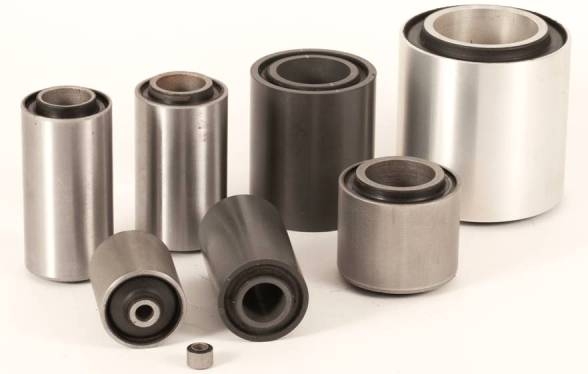
The fully bonded bush consists of rubber bonded between two concentric steel sleeves. The bush is designed to accommodate small torsion, conical and axial movements and endure radial loads.
Duplex Bushes
View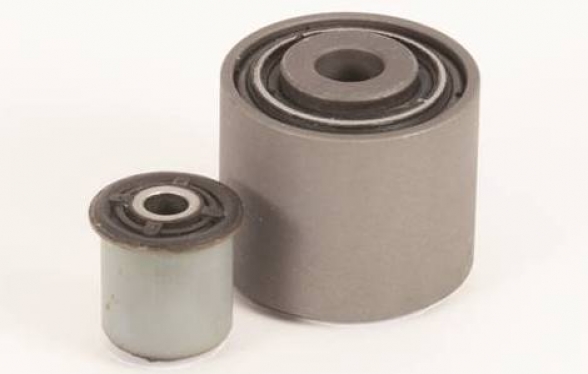
Duplex bushes are similar to standard bushes, but are reinforced with an intermediate tube. This bush configuration provides high radial load bearing whilst retaining low axial and torsional stiffness rates.
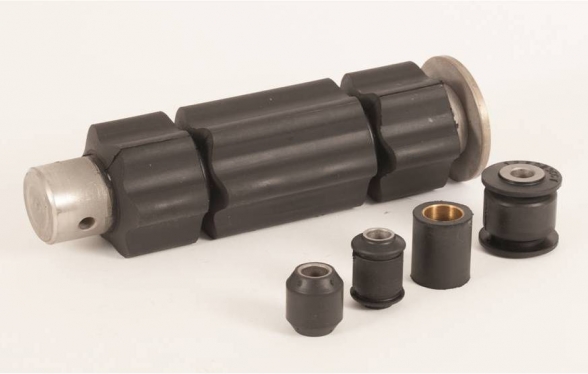
Inner sleeve bushes consist of rubber bonded to the inner sleeve and are designed to accommodate small torsion, conical and axial movements and endure radial loads.
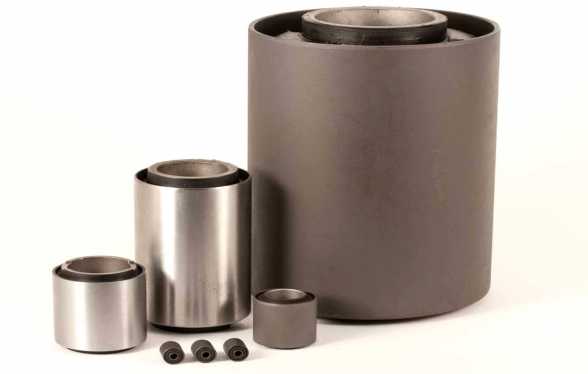
A semi-bonded bush consists of rubber sandwiched between two concentric steel sleeves. The rubber is bonded to the inner sleeve and interference fitted to the outer sleeve. The semi-bonded bush is designed to accommodate small torsion, conical and axial movements and endure radial loads.
Specials
View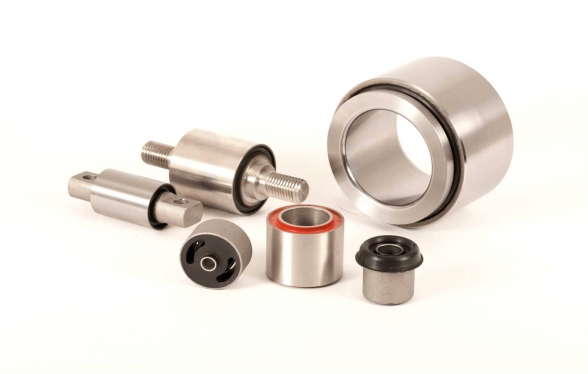
We offer a variety of non-standard bushes, designed to customer specification. If required we can use customer metal work to produce the finished part.

